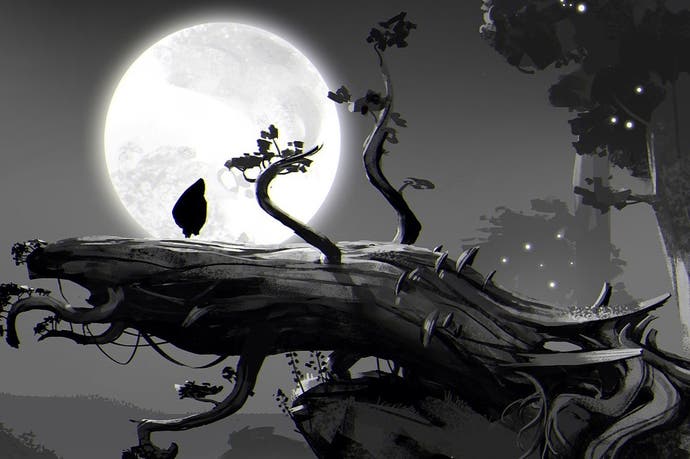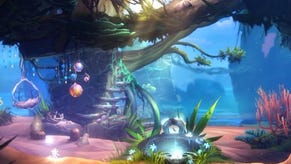Ori and the Blind Forest review
Lovely Ghibli.
First things first, Ori and the Blind Forest is gorgeous. Absolutely jaw-droppingly eye-poppingly gorgeous. You'd have to look back to Okami for a game so visually beguiling. It's the sort of game where you'll actually stop and give an involuntary "ooh" sound when you first see it in motion.
That introduction comes not via title character Ori, but through Naru, a large lolloping creature living in Nibel forest, who simultaneously evokes memories of both Totoro and the faceless masked spirit from Spirited Away. Those Studio Ghibli stylings can't be accidental, as indie collective Moon Studios delivers much the same rich, deep and gentle visuals that made Hayao Miyazaki's work so beloved. Naru plods through lush bucolic scenery with real weight, his belly swaying just so. The hazy dappled lighting is beautiful, the 2D gameplay field augmented with multiple scrolling layers, each painstakingly animated. It's so inviting, so tangible, that if you have hayfever you may find yourself stifling a sneeze.
This isn't Naru's story, though, and we're soon introduced to Ori, a cat-like sprite that emerges from a leaf fallen from a glowing Tree of Life. Naru and Ori form an immediate friendship, and the game wisely takes the time to illustrate this through gameplay, as they gather fruit and frolic in the late afternoon sun.
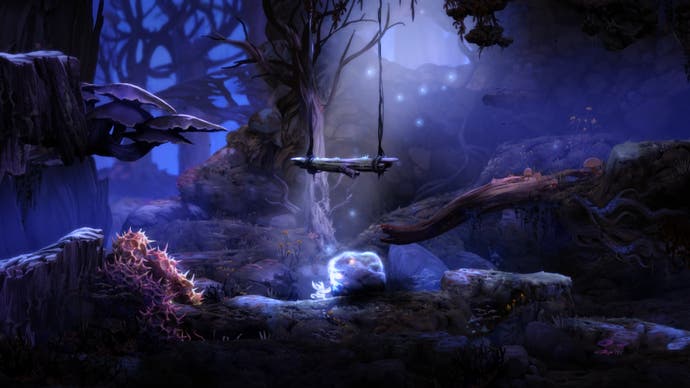
The good times don't last, of course, and following the arrival of an unseen entity called Kuro, the forest begins to die. Left alone, it's up to Ori to fix the world - a goal that is familiar from dozens of other games, but is given special resonance here thanks to the charming scene-setting. For once, this is a world you'll want to see remade.
What follows is a substantial Metroidvania-style platform game, in which you explore a large and seamless network of different areas, gaining access to more locations as Ori's abilities increase. Her core powers are bestowed by the magical and sacred trees that form your primary objectives, but she also boasts three skill paths that can also be upgraded by earning XP from defeated enemies.
The straightforward path through the game is fairly simple - albeit locked away behind gates that require multiple keys to be collected. You'll not want to speed through to the ending, though. There are countless diversions, secrets and bonus areas to find and explore, each opening up in tandem with your skills. At the start of the game, water is a deadly peril. Unlock the right ability, and suddenly those large lakes and pools become whole new areas to pick clean.
Movement is, like the visuals, graceful and stylish. It all starts from a solidly satisfying leap - not too high, not too low, just controllable enough - and steadily builds to incorporate wall jumps, dash attacks, ground slams and a sort of catapult move that can twang Ori into the air. Again, each one brings previously inaccessible locations within your reach, and sends you back to previously explored areas of the map to see what you missed.
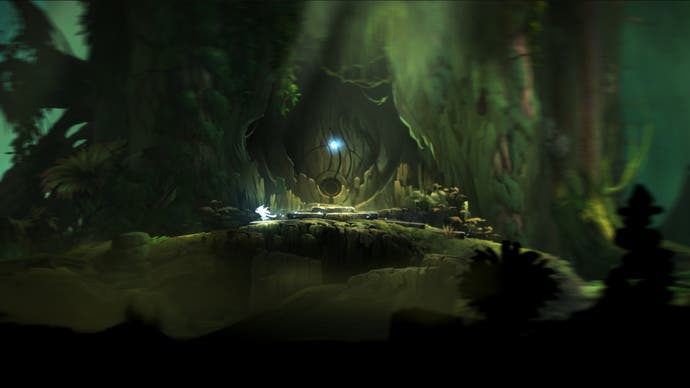
It's also a seriously challenging game, with some fiendishly designed sections that require impeccable reactions and dexterity to get through. Don't let the whimsical graphics and New Age story flourishes fool you - this is a game that will kill you over and over. It's this surprising toughness that leads into one of the game's best ideas: the only checkpoints are the ones you create yourself.
Ori has an energy reserve that is used for certain attacks and abilities, but the energy is also needed to create a Soul Link which saves your game. These Soul Links are also the only place you can spend your ability points, so making sure you have enough energy to create one - and create in the best place - is a habit you quickly learn through painful experience.
It's an ingenious idea, and adds a smart layer of additional strategy on top of the already formidable task ahead of you. The only downside is that since your energy reserves can be expanded, you find that the difficulty gets turned upside-down. At the start of the game, with only a few energy orbs to play with, you have to be frugal with your save points. Later in the game, when you have lots of energy to play with and have probably unlocked some additional perks that reduce energy expenditure and add healing features to your Soul Link, you can not only save pretty much at will, but you'll also benefit more for doing so.
While on the subject of the game's weaknesses, the combat is a poor clumsy cousin to the often sublime exploration. Attacks fall to a third character called Sein, a smaller spirit guide which accompanies Ori. There's not much nuance to Sein's power though. Mashing the X button sends out short range bursts of white flame, which will home in on any enemy close by.
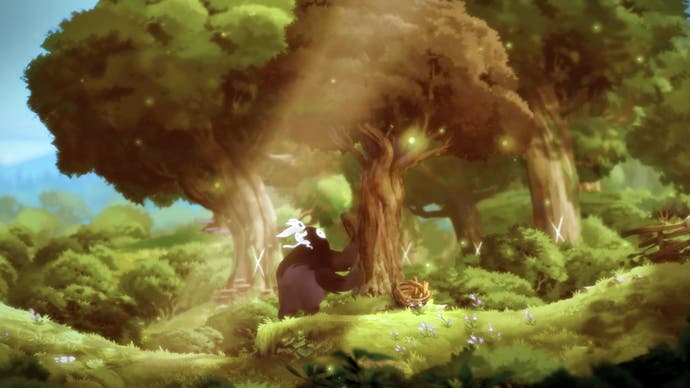
This ability can be improved but it never really evolves, and combat encounters against the various corrupted bad guys are disappointingly shallow. Each requires a different approach based on their movements - some leap, others charge for example - but you'll only ever spam them with shots. In such moments, there can be so many similar glowing things flying around in a small space - your strikes, enemy projectiles, globs of XP - that you can take a hit without seeing what struck you, one of the only times when it feels like the game isn't playing fair.
It's also true that beneath the sumptuous surface and the precision engineered mechanics, the game is disappointingly quick to fall back on platform game cliché. You'll push and pull blocks, dodge rotating blades, duck under falling blocks that seem to know when you're underneath and propel yourself upwards to stay ahead of a rising flood. They're all in service of a wonderful larger picture, but you may find yourself craving at least one obstacle you've not seen before.
It would be churlish to make too much of this minor lack of inspiration, given the unmistakable care and attention in every other aspect of the game, but then the standard elsewhere can't help but raise expectations. I found myself craving something like the brilliant musical levels from Rayman Legends, some flourish or other that gave Ori a unique gameplay hook beyond its lush appearance and polished mechanics.
Lush appearance and polished mechanics are not to be sniffed at, of course, and even if the game's long term appeal never quite reaches the dizzying heights its first impressions hint at, the difference is barely worth quibbling over. It's no exaggeration to say that Ori and the Blind Forest is still arguably the best Microsoft console exclusive of the last six months.
